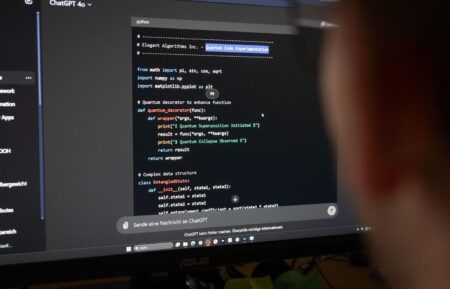For 45 years, the inspector general’s office at USAID has investigated all kinds of crimes committed using the billions in aid money the U.S. spends around the world. Earlier this year, it said it found links between staff at the United Nations Relief and Works Agency for Palestine Refugees and those who participated in the October 7 Hamas attacks in Israel. Earlier this week, the inspector general was credited with investigating a $550 million bribery scheme allegedly perpetrated by a government officer and staff at a USAID contractor; on Thursday, the Justice Department said they pleaded guilty.
But as USAID has come under fire from the Trump Administration, which has decried how foreign aid has been abused for exactly these kinds of frauds, among other critiques, this independent agency focused on rooting out such misuse has also been targeted for cuts. The White House has proposed cutting the USAID OIG’s budget from $85 million to $0, instead folding its responsibilities into a similar agency at the State department with just $2.73 million in additional funding.
These cuts aren’t a foregone conclusion. USAID OIG has support from members of Congress, who could soon find themselves in a tussle with the Trump administration over the White House’s attempts to effectively close the agency, Forbes has learned. Current and former staff also raised the alarm that shutting down investigations into fraud, corruption and child abuse facilitated by foreign aid money would only benefit those the IG is investigating.
One former USAID OIG investigator told Forbes that the entity is set up to ensure that taxpayer money is properly designated. Even though USAID has faced billions in cuts due to Elon Musk’s DOGE, many USAID contracts are still active. “The stakes are pretty high, it’s a lot of taxpayer money and if it’s not used well, people can die,” they added. “You need well-trained, aggressive investigators who’re going to do what’s right for the taxpayer. It takes years and years to develop that capability.”
The Senate Committee on Foreign Relations and the Appropriations Committee, which oversees USAID OIG, raised concerns about the cuts in May after receiving a congressional notification sent by its acting deputy inspector general Toayoa Aldridge. In the notice, which was reviewed by Forbes, Aldridge informed the committee that OIG would be winding down its caseload. Such congressional notifications are required when an inspector general’s office is about to undergo a significant change, such as termination of operations.
Members of the committee were shocked, according to one Congressional staffer, a former USAID OIG official and a source familiar with the USAID OIG’s operations.
In a previously-unreported May letter reviewed by Forbes, Idaho Republican Senator James Risch, chairman of the Senate Foreign Relations Committee, told Aldridge that existing investigations would continue and the “unique capabilities” of the OIG needed to be funded. While he said he would support an eventual merger of the USAID and State OIGs, Risch said the latter “currently lacks the capacity or capability to take on the USAID OIG’s existing caseload of audits and investigations, much less future oversight of all foreign aid.” He sent copies of the missive to secretary of state Marco Rubio and attorney general Pam Bondi, according to a note on the letter.
Aldridge withdrew the congressional notification and instead sent an official congressional budget justification to both the White House and Congressional committees, asking for a $62 million budget for the 2026 fiscal year, sources said. The IG may have to wait until September when the 2025 fiscal year ends to learn its fate.
“Through the work of our experienced law enforcement officers and auditors, USAID OIG remains firmly committed to providing the rigorous independent oversight of foreign assistance that Congress and American taxpayers expect and deserve,” a USAID OIG spokesperson said.
Insiders are baffled at the White House’s decision to drastically cut USAID OIG’s work and then merge it with the State OIG, which focuses on investigating crimes committed through the department’s diplomatic network, sources said. “It would take state OIG years, tripling its existing funding and staff to successfully build a capacity that already exists,” the source familiar with the agency’s operations said. They believed that one outcome could see the agency continue with a similar budget but with a simple “rebrand,” though still separate from the State Department-focused body.
A spokesperson for State OIG said it had been preparing to take over USAID OIG’s work, collaborating with the Department of State to receive “full access to all relevant USAID information, data, and systems necessary for our oversight.”
“We are also augmenting our investigative staff to handle any potential increased workload and are ready and available to work with USAID OIG and the Department of Justice to ensure any remaining investigations are appropriately resolved,” the spokesperson said. They said there are a number of job openings that are available only to applicants from USAID and USAID OIG.
One Congressional staffer told Forbes that they didn’t think it likely Congress would cut an agency so crucial to making sure billions in taxpayer money isn’t being used for criminal purposes For now, though, wrangling over budgets continues on the Hill and the department’s future remains in limbo.
It’s a position to which OIG staff have become accustomed. One current and one former staffer at the OIG told Forbes the agency was thrown into chaos when the White House began dismantling the body it monitors, USAID, turning it into a skeleton crew and cancelling many of its projects, which, according to one estimate, could be responsible for the deaths of as many as 300,000.
USAID OIG was asked to vacate its offices earlier this year alongside USAID, even though they’re separate bodies. It’s continuing to work investigations, though they’ve been hit by multiple delays. The investigation into how USAID monitored and tracked the supply of Elon Musk’s Starlink satellite internet systems to Ukraine, for instance, was supposed to be released in February but is yet to materialize.
MORE ON FORBES
Read the full article here

















